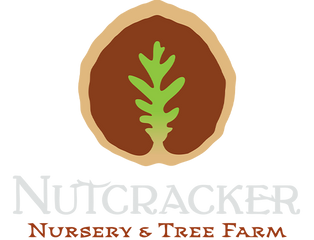Summersweet - Clethra alnifolia
Shipping calculated at checkout
46 in stock
Need more? Contact us
Available only in spring 2026
🌸 Summersweet - Clethra alnifolia
🔸 Full name
- Common name: Alder-leaved Clethra, Clethra, Sweet Pepperbush, Summersweet
- Botanical name: Clethra alnifolia
- Family: Clethraceae
- Type: Deciduous, flowering, and honey-producing shrub
🌳 General description
- Origin: Eastern North America (wetlands and woodlands)
- Habit: Upright, rounded to spreading, with flexible branches
- Mature height: 5 to 8 ft (up to 10 ft for some varieties)
- Width: 1.5 to 2 m
- Growth: Average
- Special features: Very fragrant summer flowers and golden foliage in fall, ideal for cool to moist soils.
🌱 Foliage
- Type: Deciduous
- Leaves: Oval, alternate, finely toothed (5 to 10 cm)
- Color: Shiny medium green, turning golden yellow to orange in fall 🍂
- Texture: Slightly leathery
- Special feature: Resembles that of the alder, hence its specific name alnifolia
🌸 Flowering
- Period: July to September (full summer flowering)
- Flowers: Small, white or pink depending on the variety, grouped in upright clusters (spikes) of 10 to 15 cm
- Fragrance: Very intense and sweet, reminiscent of honey or lilies — extremely attractive to bees and butterflies 🐝🦋
- Special feature: One of the few fragrant midsummer blooms for partial shade
🌾 Fruit
- Type: Small decorative brown capsules in fall
- Interest: Not very attractive, but provides food for certain birds
🌿 Cultivation and care
- Exposure: Mild sun to partial shade (avoid hot, dry conditions)
- Soil: Rich in humus, cool to moist, acidic to neutral, well-drained
- Limestone tolerance: Low
- Watering: Regular, especially in summer — cannot tolerate prolonged drought
- Pruning:
- At the end of winter or after flowering, slightly shorten the dead branches
- Remove old branches to rejuvenate the clump
- Fertilization: Compost or leaf mold every spring
🧊 Hardiness
- USDA hardiness zone: 4 to 9
- Minimum temperature: Down to -30°C ❄️
👉 Very hardy in all regions of France, even in cold or mountainous climates (if the soil is not dry).
🌿 Resistance and health
- Disease resistance: Excellent
- Pests: Very rare (sometimes aphids during drought)
- Pollution tolerance: Average
- Drought tolerance: Low — prefers soil that stays cool
💡 Advantages
✅ Very fragrant and honey-producing summer flowers
✅ Bright fall foliage
✅ Very hardy and easy to care for
✅ Tolerates light shade well
✅ Excellent shrub for moist soil or water's edge
⚠️ Points to note
⚠️ Does not tolerate dry or chalky soils.
⚠️ Slow growth in the first few years.
⚠️ May produce a few suckers if the soil is moist (easy to control).
🌳 Landscape uses
- Shrub beds or informal hedges.
- Light undergrowth gardens
- Stream banks, ponds, or wetlands
- Natural, pollinator, or sensory gardens
- In combination with: Hydrangea quercifolia, Itea virginica, Lindera benzoin, Cornus sericea, Azalea mollis, Magnolia virginiana
🌸 Interesting varieties
Clethra alnifolia ‘Hummingbird’ → Compact (1 m), very fragrant white flowers
Clethra alnifolia ‘Ruby Spice’ → Dark pink flowers, prolonged summer flowering
Clethra alnifolia ‘Pink Spire’ → Soft pink flowers
Clethra alnifolia ‘Sixteen Candles’ → Compact habit, white flowers in upright spikes
Clethra alnifolia ‘September Beauty’ → Late flowering until September



